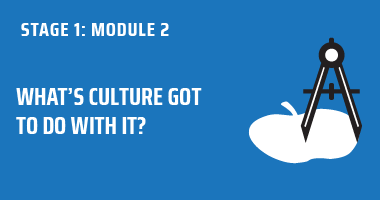Lesson 2 - Understanding the Dimensions of Collectivism and Individualism
WHAT’S CULTURE GOT TO DO WITH IT?
TIMING/TASKS: Video Length 26 minutes. To complete this lesson: 1) Watch video to end; 2) Read additional text below; 3) Download & complete exercise(s) in right column
Recognizing the Red Thread
OUTCOMES
LESSONS IN THIS MODULE
DOWNLOADS / RESOURCES
RESOURCES
No Resources this Lesson
EXERCISES
I will deepen my understanding of collectivism as a cultural orientation.
I will understand how individualism differs from collectivism.
I will understand the role individualism plays in White supremacy culture.
Educators who read Culturally Responsive Teaching and the Brain often mistake the culture tree on pg. 24 with “culture.” It isn’t. It just gives an overview of the different layers of culture.
Culture exists on a continuum; individualism at one end, and collectivism at the other. Collectivism is a core concept we will revisit a lot as we move through the PLC. Our goal over time is to learn to use it as both a lens and a set of design principles.
Unfortunately, too many educators at the beginning of their understanding of culturally responsive practices reduce collectivism to “group work” as the primary way it’s brought into the classroom. While collaboration and inclusion are part of a collectivist mindset, it doesn’t mean diverse students need to (or want to) be in groups all the time.
But before we can understand what not to do, we have to understand collectivism at a deeper level. In order to do that we have to grasp it not just as abstract information but also on a social-emotional level. When we don’t, we can often stereotype an entire racial, ethnic, or linguistic group and end up committing micro-aggressions.
Save to My Content

